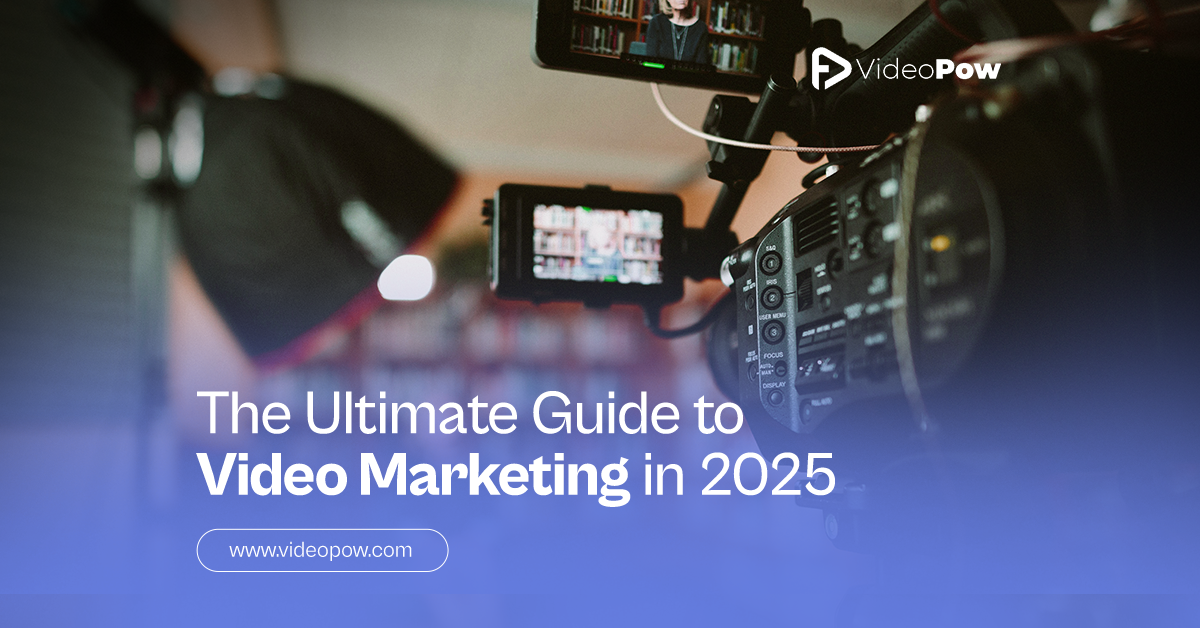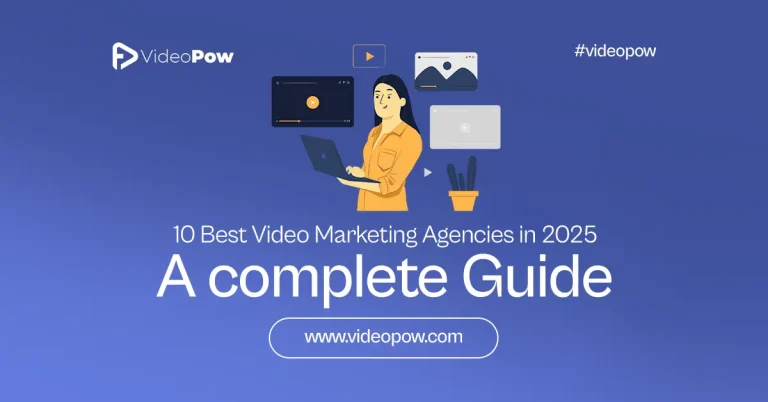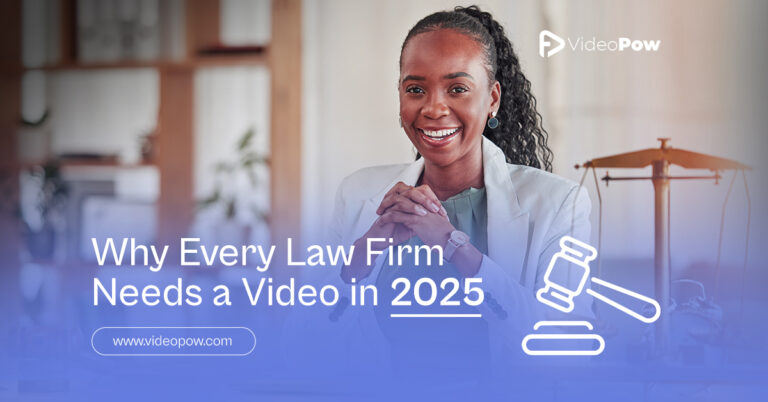If you are here, it means you understand the value of video marketing. Currently, video marketing is the most effective technique or way to engage your audience.
It might leave an impression on your prospects when they first see your brand. With a single, clearly stated value proposition, it may turn your leads into customers. Though there are countless potential for video marketing, you may be unsure if it’s the best choice for you and your company, and if so, how to get started.
We have put together an extensive guide to video marketing in 2025 basics that will walk you through everything from defining it to valuing the effectiveness of your initial material.
What is Video Marketing?

Let’s go back a little in time. Picture the early 2000s. Watching a video online feels like waiting for a pot to boil due to the excruciatingly slow internet rates. Most companies were not even considering video marketing at the time. By today’s standards, the scenes are entirely different.
Videos are now the preferred method for marketers to interact with their customers because of platforms built for video consumption, smartphones with excellent cameras, and quicker internet. Videos can connect in ways that text and images cannot, whether brand videos, silent videos with captions for scrolling users, or material geared toward younger audiences like Gen Z.
At present, a marketing strategy that also includes videos is of utmost importance. After all, videos are much more interesting than printed text and static images. The research discovered that 95% of people remember the contents of a video after watching it, while only 10% remember it if they read it. Moreover, social media platforms make it much easier to reach more people and create stronger bonds with the audience through video sharing. In particular, streaming short, fun, or educational videos serves as a great way to make people pay attention to the products and convey the brand’s messages.
Benefits of Video Marketing in 2025 for Businesses

In today’s world, there are tons of distractions and media to consume, and we have the freedom to choose what and when we consume it?
For Content to stand out, viewers/audience need to be entertained and educated within the first few seconds. They will scroll through video content at a rapid pace on TikTok, Instagram, Facebook, and LinkedIn.
People spend an average of 95 minutes a day on social media. This might seem like a new marketing challenge for businesses, but it also represents a huge opportunity for content creators. Nike Said, If you have a body, you are an athlete. Today, I must say, If you have a smartphone, you are a content creator. Every social media user needs to realize that he is both a content consumer and a content creator.
Because attention has shifted and technology has evolved, we have an opportunity to connect with millions to communicate our messages for free. All the major social media platforms favor video in the algorithms. So, If you are looking to see an uptick in your engagement, shifting toward video is an obvious choice. It grabs the audience’s attention quickly for a long and it is more likely to stop them from scrolling. Video makes it much easier to drive conversations, whether you are looking to gain more followers, and customers into making a purchase, or making traffic to your websites.
Key Trends for Video Marketing in 2025

These days, video content is available everywhere. Video content has emerged as an important marketing tool for corporations, from broadcast to social media. According to a recent Statistics, one-third of all customers globally spend one to five hours per week on premium video streaming services. Social media has only fueled the video craze, and it has had a direct impact on how we study, consume content, and make purchases.
So, how can you benefit from video marketing for your business? Continue reading to learn about the current trends in video marketing and how to incorporate video into your own marketing strategy.
1. AI Tools in Video Marketing:
Artificial intelligence continues to influence all aspects of marketing. AI is influencing the future of video marketing in a variety of ways. AI-powered solutions enable marketers to produce highly personalized video content based on individual viewer preferences and interests. Brands may use data analytics and machine learning algorithms to dynamically generate videos with personalized messaging, images, and calls to action, resulting in more relevant and engaging content.
AI is changing the video production landscape by streamlining the creation process and increasing content quality. An online AI video editor can automate editing, subtitle integration, and video resolution upgrading, saving advertisers time and resources. Here’s an Example of such videos;
These platforms also include text-to-video conversion, AI-generated pictures, and AI-generated voiceovers, allowing businesses of all sizes to create high-quality videos. Tools like Leonardo.ai for generating AI-based images and Hailuoai.video for video editing and generation make the process even more efficient. AI allows for the creation of tailored content on a big scale. Analyzing audience data allows you to adapt video themes, styles, and messaging to better engage your audience.
Using an online AI video editor enables speedy video production that are in step with current trends while maintaining high-quality standards.
As AI advances, its impact on video marketing will become even more significant. Marketers who embrace AI tools and implement them into their video marketing strategy will be better positioned to generate captivating, tailored content that increases engagement and conversions.
If AI isn’t currently part of your video game strategy, now is the time to get started. AI capabilities enable you to create experiences that resonate and convert, not just videos.
2. Short-Form Video Content:
These days, short-form video content is essential to successful marketing campaigns as well as Short-form video content is one of the hottest trends right now. These brief, captivating videos have drawn the attention of billions of viewers on platforms like TikTok, Instagram Reels, YouTube Shorts, and LinkedIn which are becoming more and more popular.
To increase audience engagement, boost brand awareness, and maintain competitiveness, marketers must comprehend and use short-form videos. The adaptability and efficiency of short-form video content provide a wide range of fascinating and captivating use cases, whether you’re showcasing your branding, goods, and services with captivating audio-visual components or following the newest TikTok craze.
The ideal duration for short-form videos is usually between 60 and 3 minutes. They signify a significant change in the content preferences of many viewers, particularly among younger audiences.
The phrase “Letting Gen Z Edit My Videos” generates videos with millions of views on TikTok and Instagram reels.
Mike Hege is an American real estate broker who created a business promotional video that he planned to share on Instagram. He decided it could need a little editing before posting it, so he naturally assigned the task to one of his Gen Z employees, who would be accustomed to editing videos for social media. But the result was not what he expected. The video only showed scenes of him breathing before speaking, with no clear message or purpose. Surprisingly, this weird and funny editing style turned the video into a huge hit. It went viral, getting over 80 million views on Instagram and being shared across platforms like Twitter (X).
This shows how short-form videos, especially on platforms like Instagram Reels, TikTok, and YouTube, are becoming more popular. Even unusual and funny content can grab people’s attention and go viral, proving that creativity has no limits.
Although the idea of short-form video marketing is not new, it is still becoming more and more popular, particularly on sites like YouTube, Instagram Reels, and TikTok.
I really enjoy making short-form videos because they not only draw viewers in by showing behind-the-scenes footage of your business or brand and using powerful calls to action, but they also boost interaction with your target demographic by leveraging popular trends.
Why Short-Form Video Content is Important?
If your company isn’t already producing short-form video content for social media, you should start now since it’s rapidly rising to the top of the list.
Some significant figures that support the significance of short-form video content are as follows:
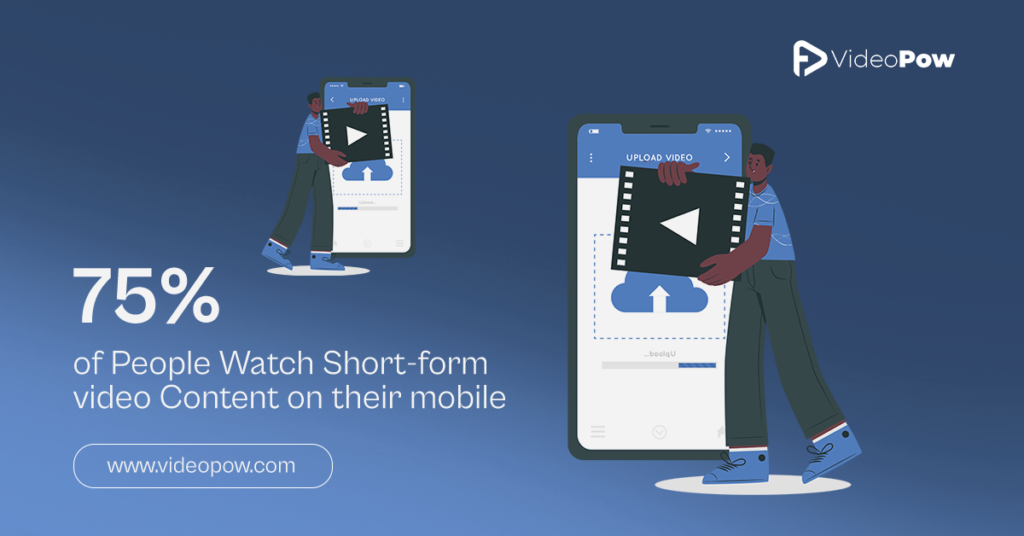
- With more than 1.6 billion active users worldwide in 2024, TikTok is still expanding. It continues to be the top platform for short-form video content, controlling user interaction.
- In the first few seconds of a video, 71% of viewers determine its value, making short-form videos the most popular type of material. The best return on investment for marketers is still in this format.
- By 2025, adults in the United States are expected to spend an additional 58.4 minutes a day on TikTok as the platform incorporates more interactive and e-commerce elements.
- 47% of marketers agree that short-form videos are the most likely format to go viral and are thought to be the most effective for generating leads and brand awareness, according to a HubSpot survey.
- 73% of video marketers say that video marketing helps them accomplish their overall business objectives.
Top Platforms for Short-Form Video Content:
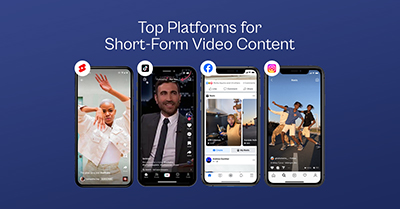
There are three main short-form video platforms for use. While Vine’s six-second films kicked off the short-form video push in 2020, the excitement did not last long. Then, Musical.ly was launched for brief lip-syncing videos, was acquired by TikTok, and reinvented as the short-form pioneer we know and love today.
Instagram and YouTube introduced its own short-form video features, Instagram Reels and YouTube Shorts, in response to TikTok’s popularity.
TikTok:

TikTok is a popular short-form video platform that allows users to make videos that last between 15 seconds and 3 minutes. Its attractive interface, ease of usage, and reach potential make it the preferred platform for short-form video creators. Additionally, you should spend time interacting with your audience by answering comments and chatting with other creators.
Instagram reels:
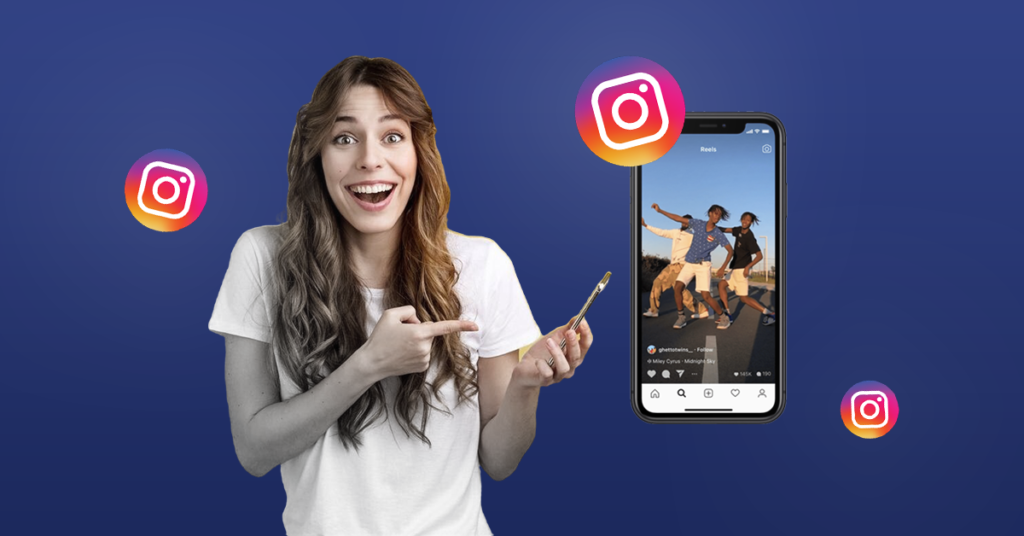
Instagram Reels is a feature on Instagram that allows users to make and discover short, entertaining videos. These videos can be up to 90 seconds long and are popular among content creators and influencers.
Instagram users enjoy visually appealing and engaging content. Make use of top-notch video recording gear and maintain a brand-consistent look. Since many people watch videos in public without sound, don’t forget to include text overlays and captions.
Users can press on the home screen’s center icon to access Reels. However, Instagram’s algorithm has made Reels very popular, and if you go through your feed, you’ll probably see a lot of Reels. Like TikTok, tap the Reel to open it, then scroll down to see more.
Youtube Shorts:

The most popular video site, YouTube, has maintained its position since its introduction in 2005. They would naturally want to build a name for themselves in the short-form video industry.
Alternatively, you can click the Shorts icon in the bottom menu to watch shorts, scrolling up after each video to see something new. You can also find Recommended Shorts directly on the YouTube home screen.
YouTube viewers are often looking for entertaining or educational content, so try to create shorts that clearly add value. You can construct shorts out of your longer content to make things easier. Look for important topics that your audience found compelling and summarize them briefly.
Facebook Reels:

Identifying your target audience and creating content that appeals to them is made easy using Facebook. To keep your audience interested, continue posting frequently.
Short-Form Video Content Best Practices:
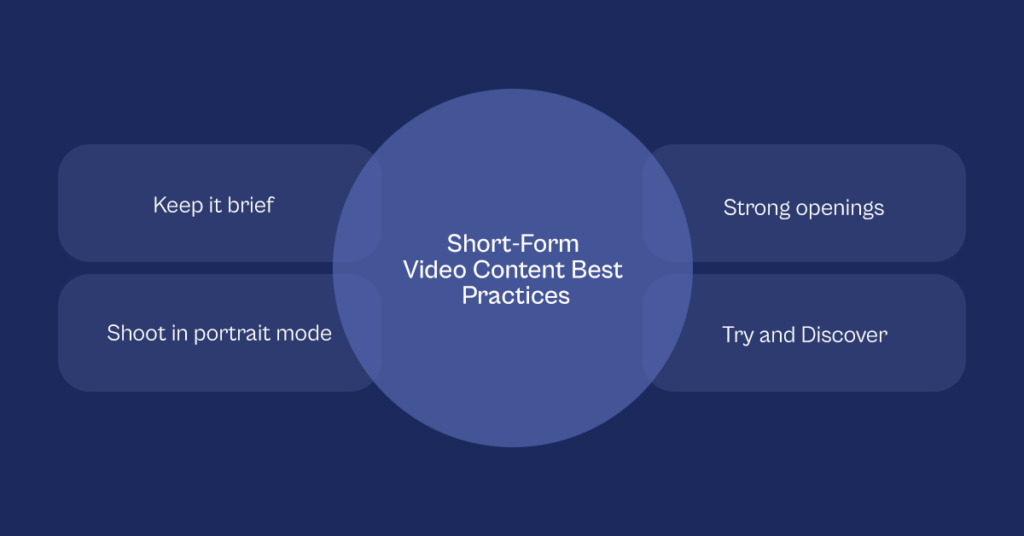
- Keep it brief: No matter the platform, make sure your content is clear and succinct. For the maximum engagement, aim for 30 to 60 seconds.
- Shoot in portrait mode: Since most people watch short films on mobile phones, shoot your videos vertically to make them easier for them to watch. Additionally, it eliminates the need to crop them, which degrades quality.
- Strong openings: By creating a curiosity loop or hinting at something valuable, your video’s opening should entice viewers to stay watching.
- Try and discover: Utilize platform analytics to determine what works and adjust your strategy in light of actual data.
3. Long-Form Videos:

Long-form video material is making a comeback in 2025, and it isn’t a passing fad. Marketers are rediscovering the value of in-depth, engaging content that keeps users engaged for longer.
Long-form video content is like the slow-cooked dinners of video marketing. It’s genuinely gratifying and full of value. Long-form videos allow companies to delve deeply into themes, demonstrate their expertise, and strengthen connections with their audience. Think of interviews, webinars, and even documentary-style content.
The trick with long-form video is that it must be good. (Imagine getting hooked on those recipe demos on Facebook. They may just last two minutes, but you want to see the finished food.
Did you know that longer videos can increase engagement rates? Twentythree.net discovered that videos longer than 15 minutes account for 50% of all video interaction but only 8% of content. Think about it for a minute. You can generate fewer, longer videos and achieve better results.
4. Product Videos:
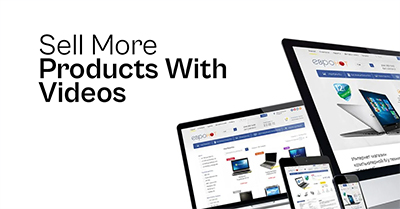
Now imagine a customer watching your product in action rather than reading about it. That’s the magic of product videos. Product videos are the secret weapon in modern marketing, they convert curiosity into sales.
A popular trend in product videos is narrative and emphasizing the product’s value proposition. Rather than simply listing features, high-quality product movies demonstrate how the product solves problems or improves the user’s life. This narrative method creates an emotional bond with the viewer and allows them to visualize themselves using the product.
User-generated content (UGC) is also prominent here. Featuring genuine customers who share their experiences and testimonials fosters confidence and credibility among the target audience. UGC films appear authentic and approachable, making them an effective tool for influencing customer decisions. It’s a sprinkling of sincerity that transforms your video from a sales tool to a connection tool.
What impact do product videos have on consumer behavior? Undeniable. According to studies, watching a video on a product increases the likelihood that the viewer will purchase it.
5. Social Media Video Marketing:
Social video is about more than just going viral, it’s also about fostering community. The appropriate video may stir debate, elicit emotions, and convert inactive viewers into devoted followers.
TikTok and Instagram Reels have attracted younger viewers with their algorithmic feeds that prioritize interesting, innovative, and easily digestible videos. Brands that capitalize on this trend by creating appealing short-form videos can dramatically increase their visibility and reach.
Live video streaming is another innovation. Platforms such as Facebook, Instagram, and YouTube provide live streaming functionality, allowing marketers to communicate with their audiences in real time. Live videos are especially engaging, with an average engagement rate of 1.59%, surpassing other sorts of social media posts. Social media video marketing significantly increases brand visibility and engagement.
How to Implement Video Marketing Trends?
Are you ready to leap into the wild world of video marketing? Here is your roadmap:
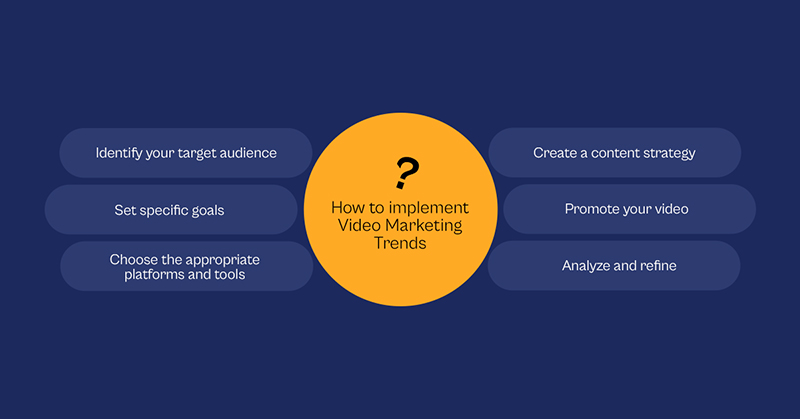
Identify your target audience: Before you start recording, get to know your audience. Define their demographics, interests, pain issues, and preferred platform. This information enables you to create content that speaks directly to them.
Set specific goals: What do you hope to achieve with your videos? Increase brand exposure, internet traffic, leads, or sales. Set quantifiable goals (such as SMART—Specific, quantifiable, Achievable, Relevant, Time-bound) to guide your content development and measure your progress.
Choose the appropriate platforms and tools: Choose platforms that resonate with your audience and goals. Think about YouTube, TikTok, Instagram, and LinkedIn. Also, don’t scrimp on equipment, cameras, microphones, lights, and editing software. Quality is very important.
Create a content strategy: Create a content calendar outlining video genres, topics, and release schedules. To keep things interesting, alternate between short and long form material, product videos, and social media-specific forms.
Promote your video: Share your creations via social media, your website, and email newsletters. Engage with your audience by responding to comments and encouraging shares. Collaborate with influencers or brands to reach a new audience.
Analyze and refine: Use analytics tools to monitor the performance of your videos. Monitor views, engagement, watch time, and conversions. Use this information to refine your plan and continue to improve.
Mistakes to Avoid:

Ignoring video quality: Don’t sacrifice quality in the rush to create material. Poor video and audio can turn off viewers as quickly as a cat avoids water, and it can ruin your business image. To ensure that your videos appear great, invest in good equipment, practice basic editing, or hire professionals.
Neglecting audience engagement: Video marketing is a two-way street, it involves starting a dialog with your audience. Encourage viewers to like, comment, and share videos. Dive into the comments area and participate. Figure out your audience’s behavior using video analytics. Engaging with your audience fosters trust and loyalty, making them more inclined to return.
Failure to track performance: Without measuring crucial metrics, you’re flying blind. Use analytics tools to track views, watch time, engagement, and conversion rates. This wealth of information will allow you to fine-tune your strategy, highlight what works, and optimize future videos for even greater results.
Frequently Asked Questions (FAQS)
How can AI tools assist with video marketing?
AI tools are video marketing’s hidden powerhouse. They automate video editing, content production, and customization. They also provide crucial insights through data analysis and help fine-tune your videos for optimal engagement and conversion rates.
What are the top video marketing trends for 2025?
What are the top video marketing trends for 2025?
In 2025, video marketing will focus on embracing AI technologies, short-form content on Instagram and TikTok Reels, an unexpected return of long-form videos, the irrefutable impact of product videos, and social media’s ever-increasing importance in creating video tactics.
How do marketers create resonates with consumers in 2025?
As society’s knowledge of environmental issues and social responsibility rises, consumers are drawn to companies that share their beliefs. By 2025, video marketing tactics may need to prioritize sustainability and social effects. Understanding how to genuinely communicate a brand’s commitment to these values through video content will most certainly be a top priority for marketers looking to connect with aware consumers.
That’s a wrap!
The rise of video marketing has created a one-of-a-kind opportunity for businesses like yours. As customers continue to favor video over other types of content, they want brands of all sizes and industries to communicate with them through video. Platforms are progressively prioritizing video content, and new devices such as phones and tablets are more video-ready than ever. That means you must fully utilize this fantastic marketing tool in order to remain competitive. The more you wait, the more consumers you lose.
At VideoPow, we make video marketing simple and effective. From creating engaging content to helping you connect with your audience, we’re here to turn your ideas into videos that work. Get in touch with us today and start growing your business through video!

